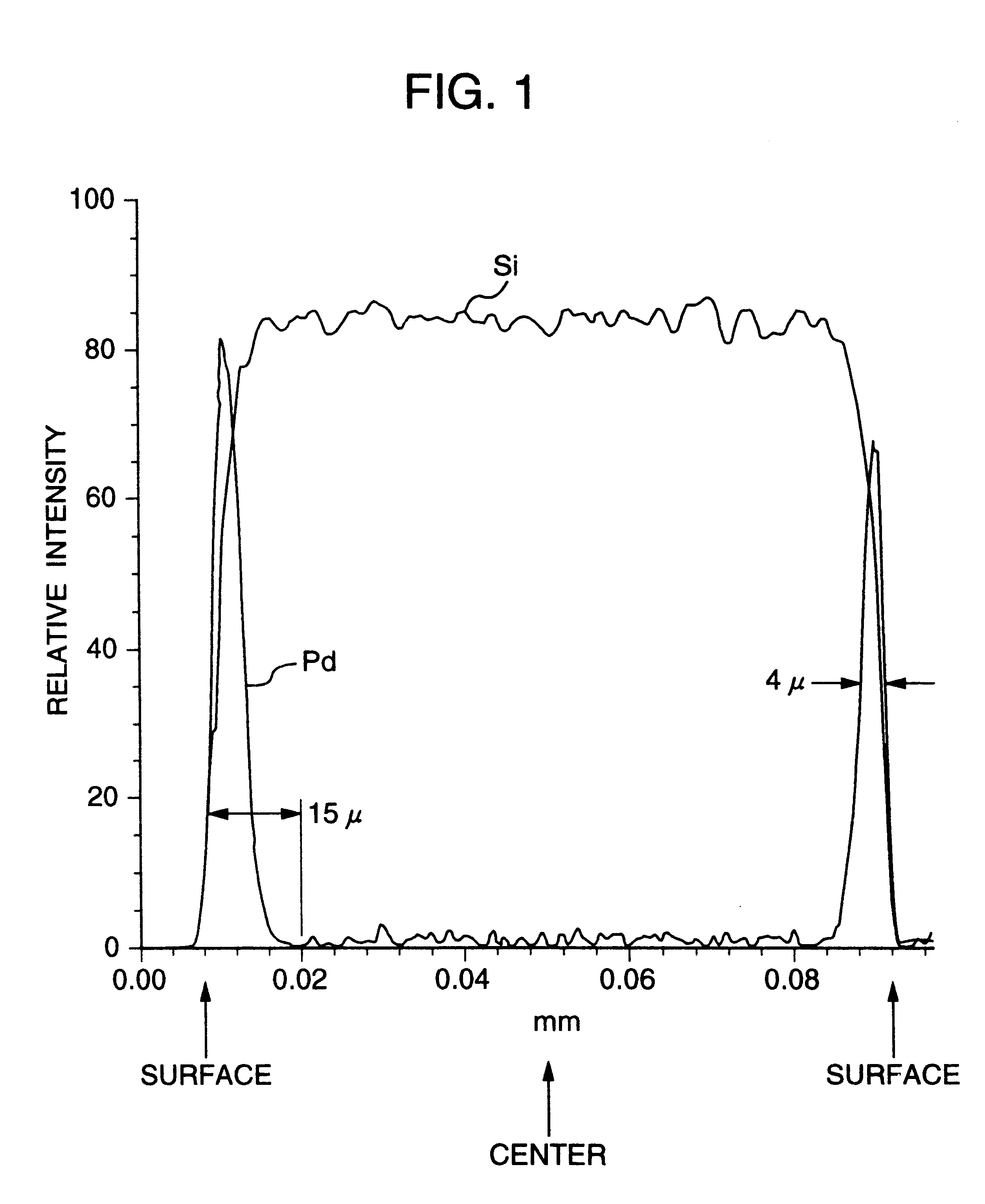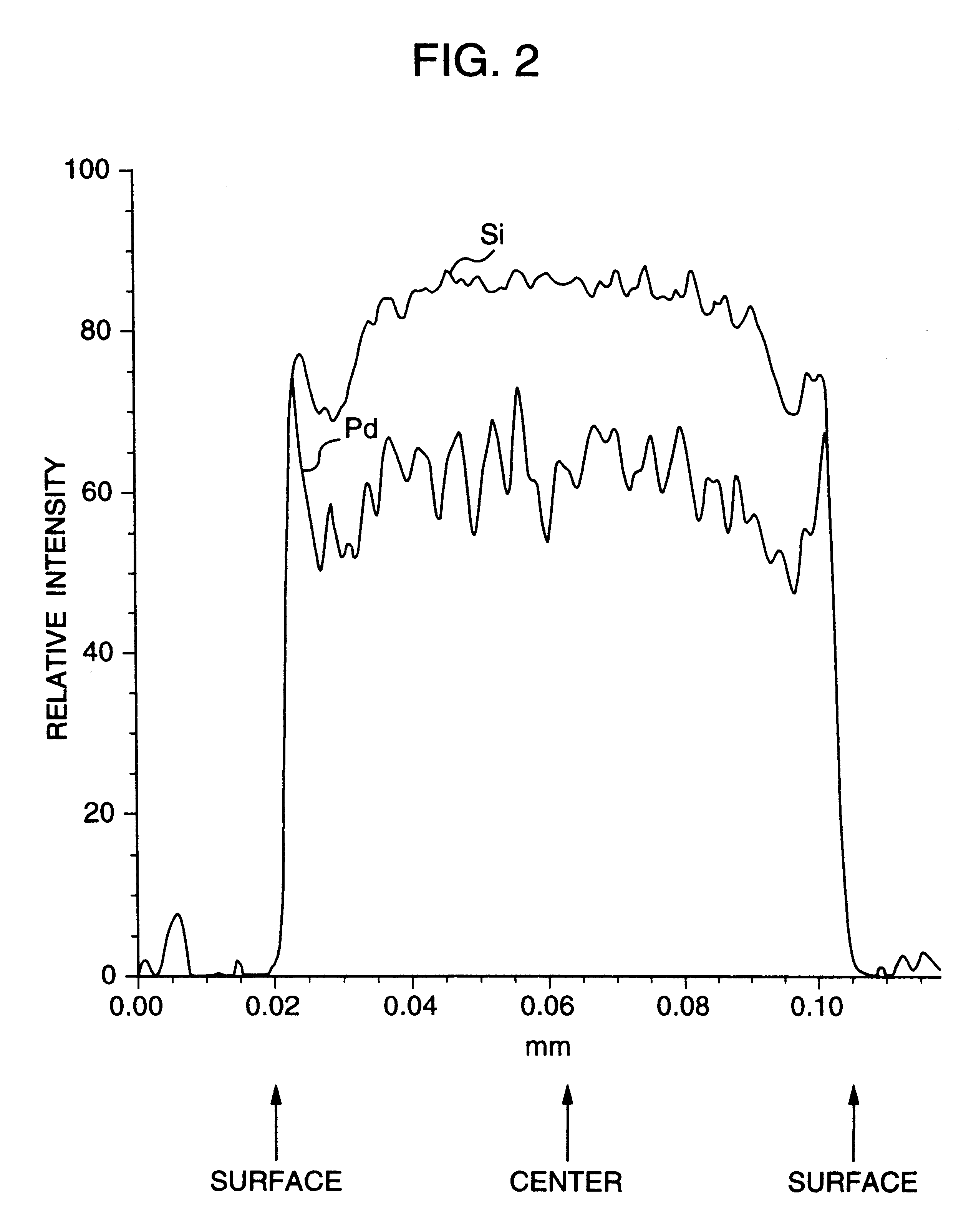Noble metal support
a metal support and noble metal technology, applied in metal/metal-oxide/metal-hydroxide catalysts, physical/chemical process catalysts, catalyst separation/purification, etc., can solve the problems of catalyst deactivation, catalyst components supported in the interior of the carrier are not effectively utilized, and active components of the catalyst are lost, so as to achieve the effect of effectively utilizing the noble metal pd supported
- Summary
- Abstract
- Description
- Claims
- Application Information
AI Technical Summary
Benefits of technology
Problems solved by technology
Method used
Image
Examples
example 2
An aqueous aluminum nitrate solution in an amount corresponding to 0.35 part by weight of aluminum per 100 parts by weight of the carrier of Example 1 was heated to 90.degree. C. and stirred, and the carrier in the dry state obtained in the Carrier Production Reference Example was instantly added thereto. The resulting mixture was stirred for a further 15 minutes at 90.degree. C. Subsequently, to the mixture was instantly added an aqueous solution of 15% by weight of palladium chloride and 10% by weight of sodium chloride, which solution was heated to 90.degree. C., in such an amount that the proportion of palladium became 5 parts by weight per 100 parts by weight of the carrier and the resulting mixture was stirred for a further one hour at 90.degree. C. to allow the palladium chloride to be completely adsorbed on the carrier. Subsequently, the liquid was decanted and the carrier on which palladium had been adsorbed was washed with distilled water several times. Subsequently, the c...
example 3
In a stirring type stainless steel reactor having a 1.2-liter liquid phase portion and provided with a catalyst separator was placed 200 g of the catalyst of Example 2, and an oxidative carboxylic ester-producing reaction between an aldehyde and an alcohol was carried out while the contents were stirred at such a rate that the tip speed of the stirring blade was 4 m / s. A 36.7% by weight methanolic methacrolein solution to which lead acetate had been added in such an amount that the concentration thereof in the reaction system became 30 ppm and a 2-4% by weight methanolic NaOH solution were continuously fed at 0.54 liter / hr and 0.06 liter / hr, respectively, to the reactor (the methacrolein concentration in the reaction system consisting of the above two solutions was about 33% by weight); air was blown thereinto so that the oxygen partial pressure at the outlet of the reactor became 0.2 atm. at a reaction temperature of 80.degree. C. and at a reaction pressure of 5 kg / cm.sup.2 ; and t...
example 4
100 parts by weight of a silica gel carrier manufactured by Fuji Silicia (CARIACT-10, 150 .mu.m in diameter) was introduced into an aqueous potassium acetate solution containing 5 parts by weight of potassium, and the resulting mixture was subjected to impregnation and drying. The mixture was further calcined at 600.degree. C. for 3 hours in air. Subsequently, an aqueous aluminum nitrate solution containing 0.6 mole of aluminum per mole of palladium was heated to 90.degree. C. and stirred, into which the carrier was momentarily introduced. The resulting mixture was stirred at 90.degree. C. for a further 15 minutes. The temperature of the mixture was lowered to room temperature, at which temperature an aqueous solution of 15% by weight of palladium chloride and 10% by weight of sodium chloride was added to the mixture with stirring in such an amount that the proportion of palladium became 5 parts by weight per 100 parts by weight of the carrier, whereby palladium chloride was allowed...
PUM
| Property | Measurement | Unit |
|---|---|---|
| particle diameter | aaaaa | aaaaa |
| depth | aaaaa | aaaaa |
| temperature | aaaaa | aaaaa |
Abstract
Description
Claims
Application Information
 Login to View More
Login to View More - R&D
- Intellectual Property
- Life Sciences
- Materials
- Tech Scout
- Unparalleled Data Quality
- Higher Quality Content
- 60% Fewer Hallucinations
Browse by: Latest US Patents, China's latest patents, Technical Efficacy Thesaurus, Application Domain, Technology Topic, Popular Technical Reports.
© 2025 PatSnap. All rights reserved.Legal|Privacy policy|Modern Slavery Act Transparency Statement|Sitemap|About US| Contact US: help@patsnap.com



